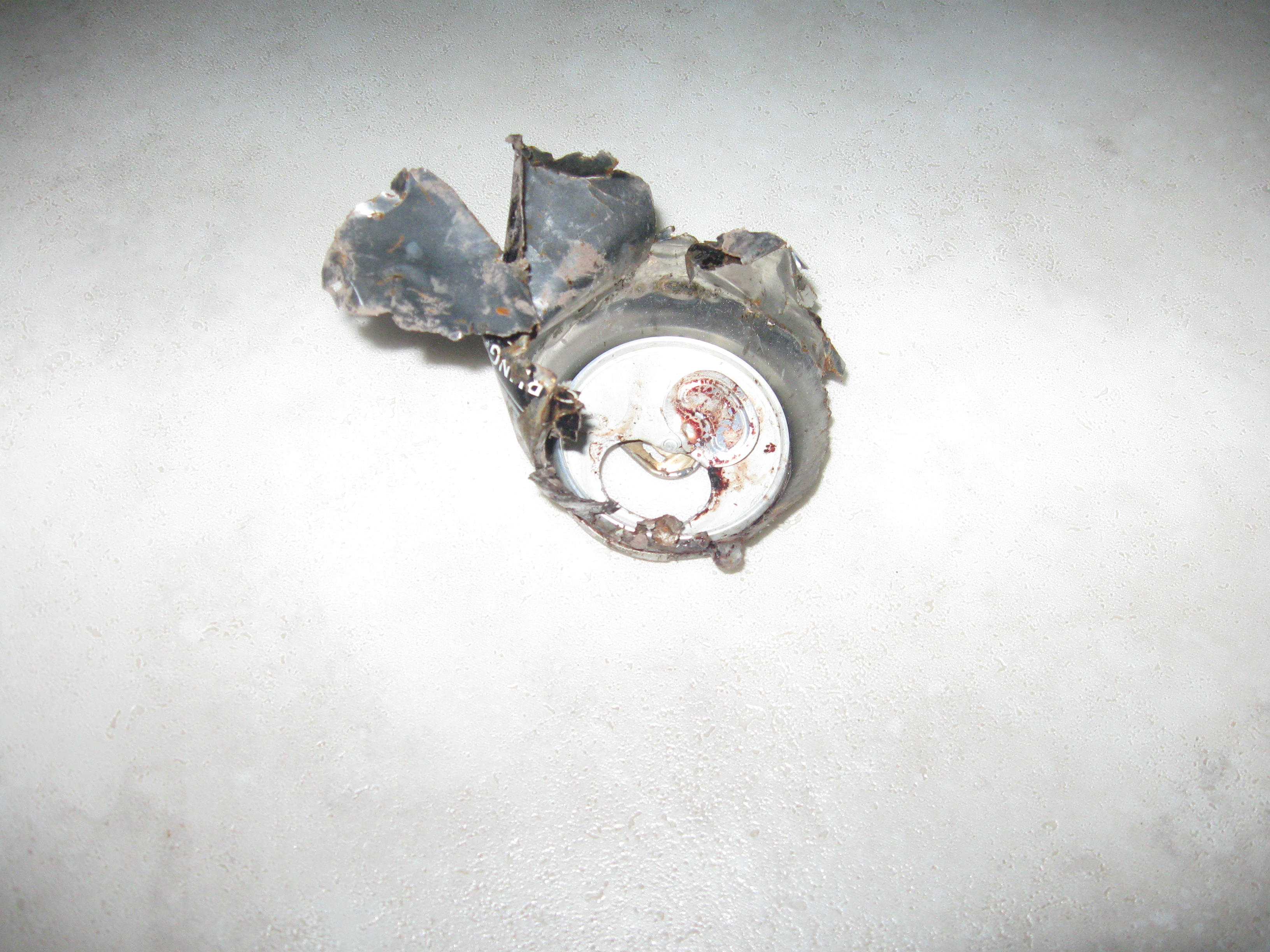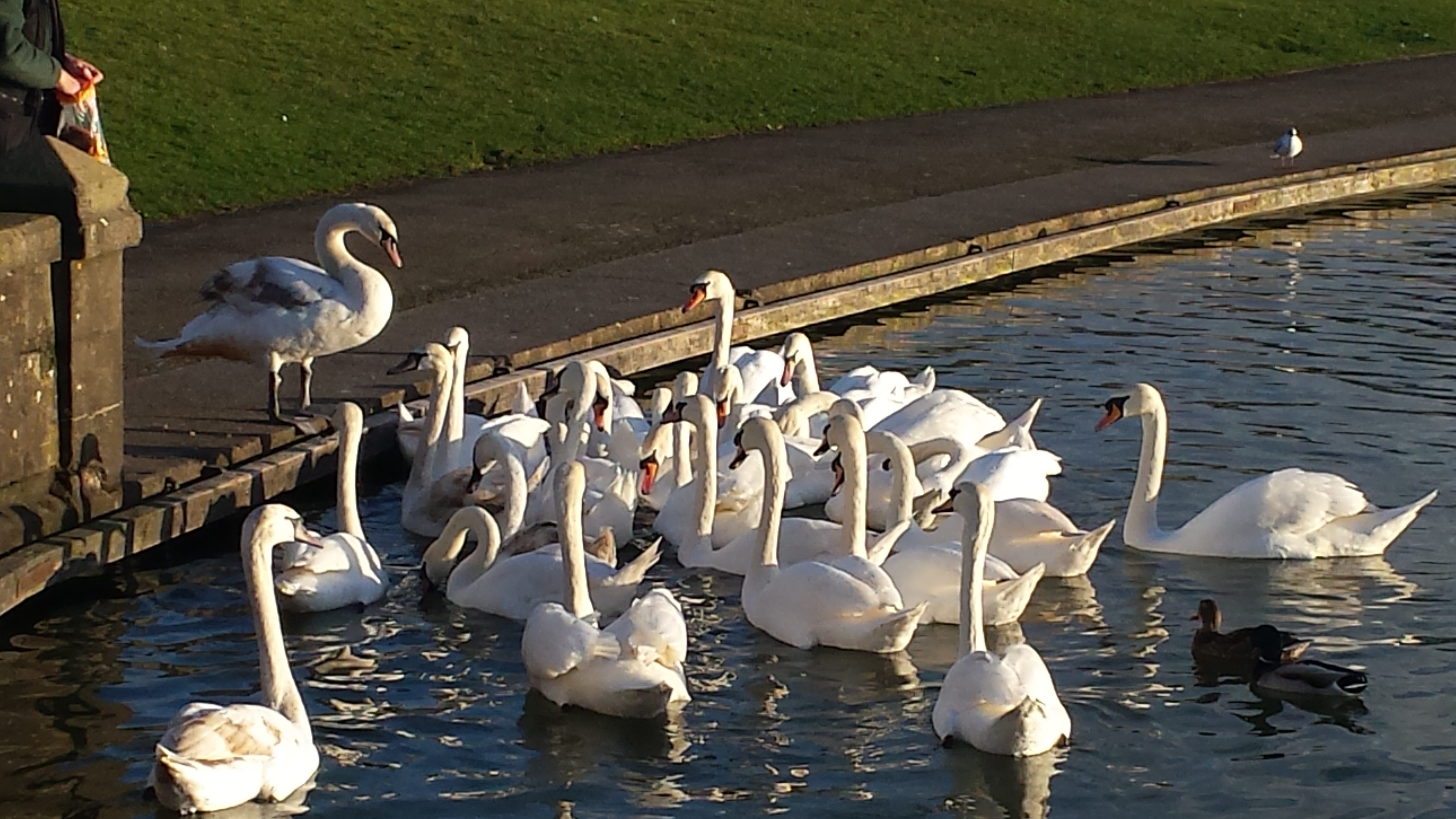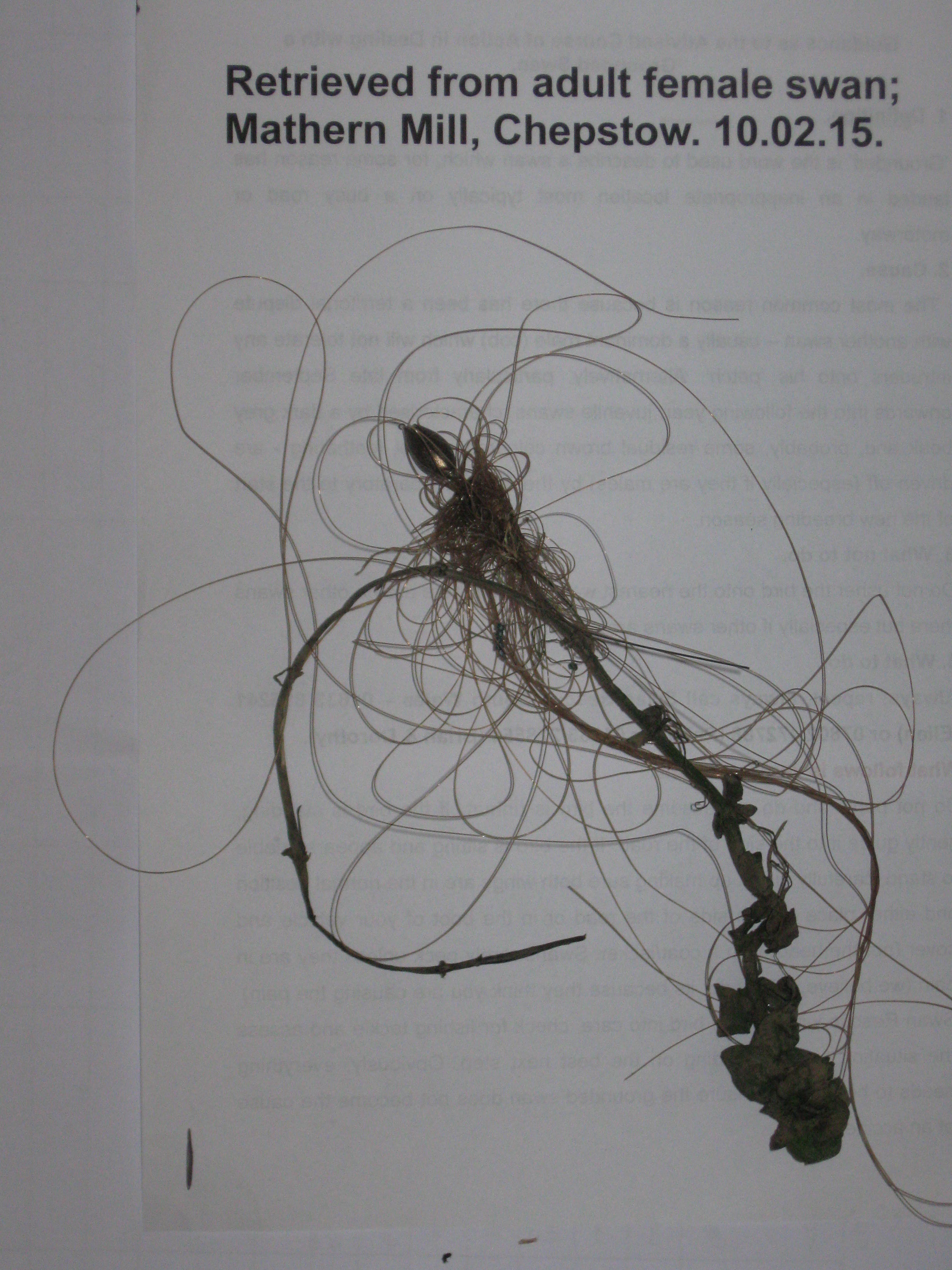 From time to time we are asked which is the busiest time of year for us as swan rescuers. Frankly, there is no simple answer to that question. There is the surge in calls for help during the school summer holidays (and in the few weeks immediately following them) to deal with birds which have had the misfortune to pick up lost or carelessly discarded fishing tackle, and then there is the period starting in the autumn, when the young birds start to make their own way in the world – either voluntarily, or because mum, or more likely dad has decided that’s the way it should be…’Kids, its time you were off; your mum and I need to prepare ourselves for the next breeding season’. And it can be quite brutal; if, particularly a male juvenile is reluctant to leave, the result can be fatal for the young bird. For us, rescuing juveniles which have come to grief soon after leaving the home territory, seems to have gone on longer this year than is usual – and as I write – late January, it is obvious it’s not over yet. So, as we approached Christmas, we really were looking forward to a bit of a lull.
From time to time we are asked which is the busiest time of year for us as swan rescuers. Frankly, there is no simple answer to that question. There is the surge in calls for help during the school summer holidays (and in the few weeks immediately following them) to deal with birds which have had the misfortune to pick up lost or carelessly discarded fishing tackle, and then there is the period starting in the autumn, when the young birds start to make their own way in the world – either voluntarily, or because mum, or more likely dad has decided that’s the way it should be…’Kids, its time you were off; your mum and I need to prepare ourselves for the next breeding season’. And it can be quite brutal; if, particularly a male juvenile is reluctant to leave, the result can be fatal for the young bird. For us, rescuing juveniles which have come to grief soon after leaving the home territory, seems to have gone on longer this year than is usual – and as I write – late January, it is obvious it’s not over yet. So, as we approached Christmas, we really were looking forward to a bit of a lull.
In the event, it wasn’t too bad; there was a year when, confronted with a very sick bird, there really was no choice but to head for the National Swan Sanctuary on Christmas Day. As it happened, we did get through to 28th December before the first crisis came into view. This involved a white goose at Roath Park Lake reported to have the remnant of a cola drink can stuck over the lower part of its beak. The weather was fair, so there were lots of people out walking.

It was not surprising therefore that, over a period of five hours, we received at least 15 calls about this. What was surprising was that, despite walking slowly all the way around the lake twice, we did not see ‘our goose’. There was nothing for it, but to come back the following day.
Thankfully, Monday arrived dry and fairly still; at least we didn’t have to fight the weather as well! This time, we spotted the goose quite quickly; he was a member of a ten goose flotilla which for what seemed a long time remained stubbornly some distance off-shore – just patrolling up and down the central part of the lake. Occasionally they would approach the bank as if to come out and preen, or more likely demand food. After what seemed an age, and although it seemed to be getting colder, but probably wasn’t, the group really did approach the bank with intent, and the leader clambered out. This is the time to hold one’s breath and be patient, because, as we tell anyone who is curious about what we are doing, you do get only one chance. Eventually, the whole group was on the bank, and more importantly, a reasonable distance away from the water’s edge.
Now is the time to start feeding, casually slowly moving into the group in such a way as not to cause alarm, and also explaining to the growing number of onlookers the best way they can help is to do nothing. A split second decision … and its all over!
 Brutal it may be…all the other birds have scattered, but I have the target bird firmly in my arms. Removing the piece of can is not straightforward, and there is no way it could have come off on its own; the edges of a goose (and swan) beak are serrated for tearing vegetation – they are vegetarian. In addition, in this particular case, the serrations sloped slightly backwards, so the can had to be lifted clear of the serrations before being removed from the beak itself. One much relieved (we assume) goose returned to the lake…
Brutal it may be…all the other birds have scattered, but I have the target bird firmly in my arms. Removing the piece of can is not straightforward, and there is no way it could have come off on its own; the edges of a goose (and swan) beak are serrated for tearing vegetation – they are vegetarian. In addition, in this particular case, the serrations sloped slightly backwards, so the can had to be lifted clear of the serrations before being removed from the beak itself. One much relieved (we assume) goose returned to the lake…
Two days later, we had a call from the rangers to collect an adult swan which was obviously very sorry for itself. It was in a collapsed state, probably resulting from coming runner-up in a territorial dispute; one wing was quite badly dropped, but fortunately, not broken.
Fast forward to New Year’s Day, and this was another territorial dispute this time involving a juvenile with two dropped wings – mercifully not broken as the initial report suggested.
This bird was very funny. We do like to take photographs of our casualties. In his case, as we were preparing the camera for use, he thought we were preparing to feed him. In no time at all, we was right up close ‘demanding’ to be fed! The photograph idea had to be abandoned right away, so allowing us the opportunity for one of the easiest imaginable rescues.
Neither of these birds needed any surgical intervention; just peace and quiet, and rest, so the following day we took them to a sanctuary just north of Worcester, where they will get just that.
The holiday period couldn’t possibly pass without fishing tackle putting in an appearance at some point; and so it was, as the light was fading on the 3rd. This was one of those frustrating events; two circuits of Roath Park Lake failed to confirm the presence of a tackled swan; it does happen from time to time they lose it themselves, or they swallow it, but at least there were no subsequent reports of a swan in trouble.
The walk around the lake revealed the flotilla of geese with which we started this story had gained a new member, and the casualty of a week earlier appeared to be none the worse for his experience.


























